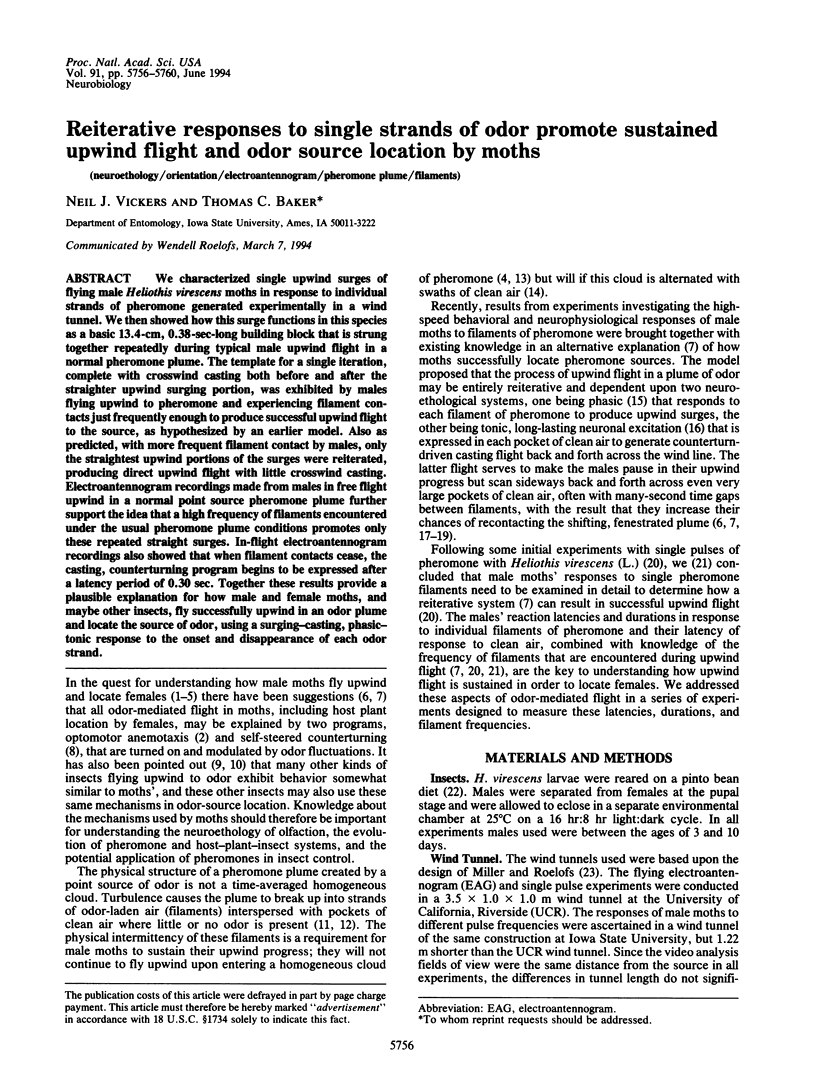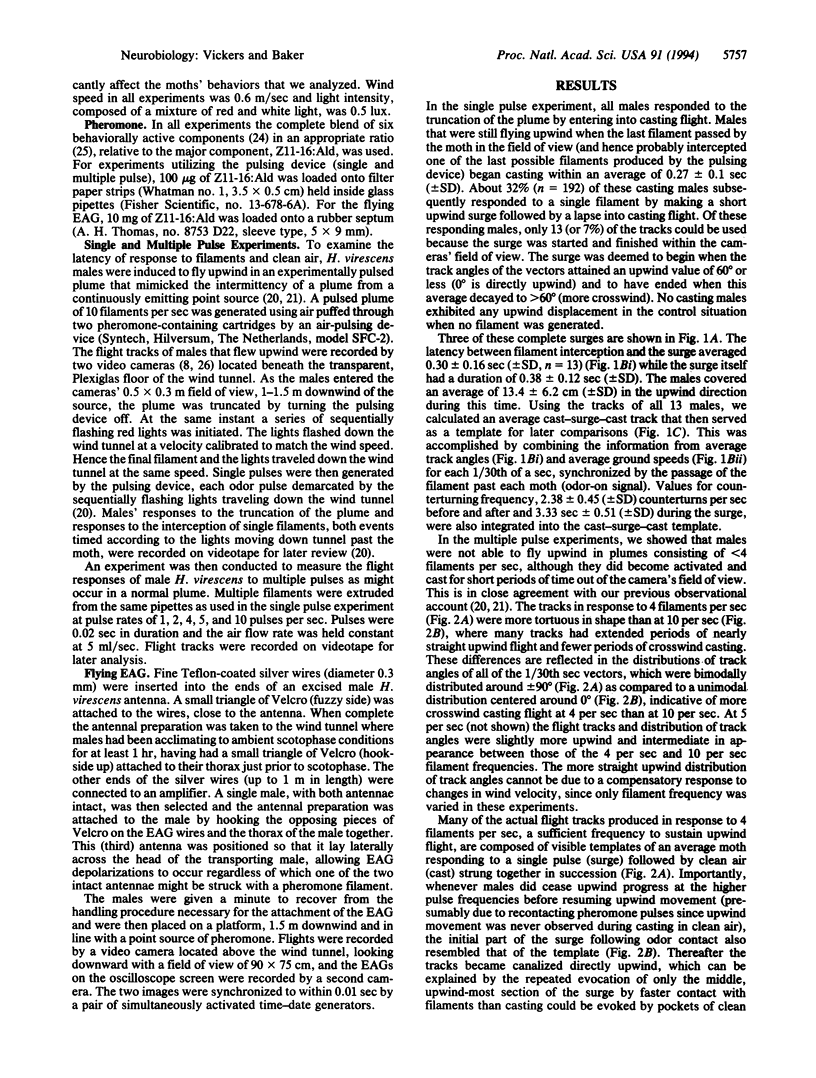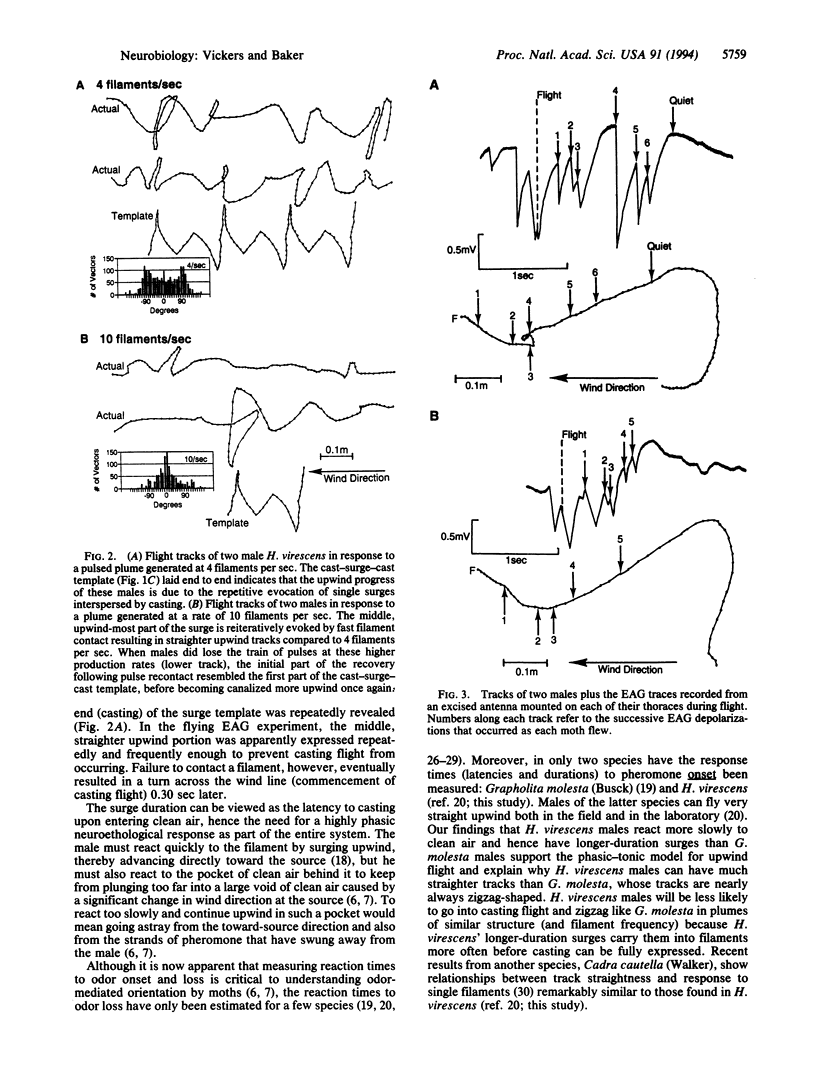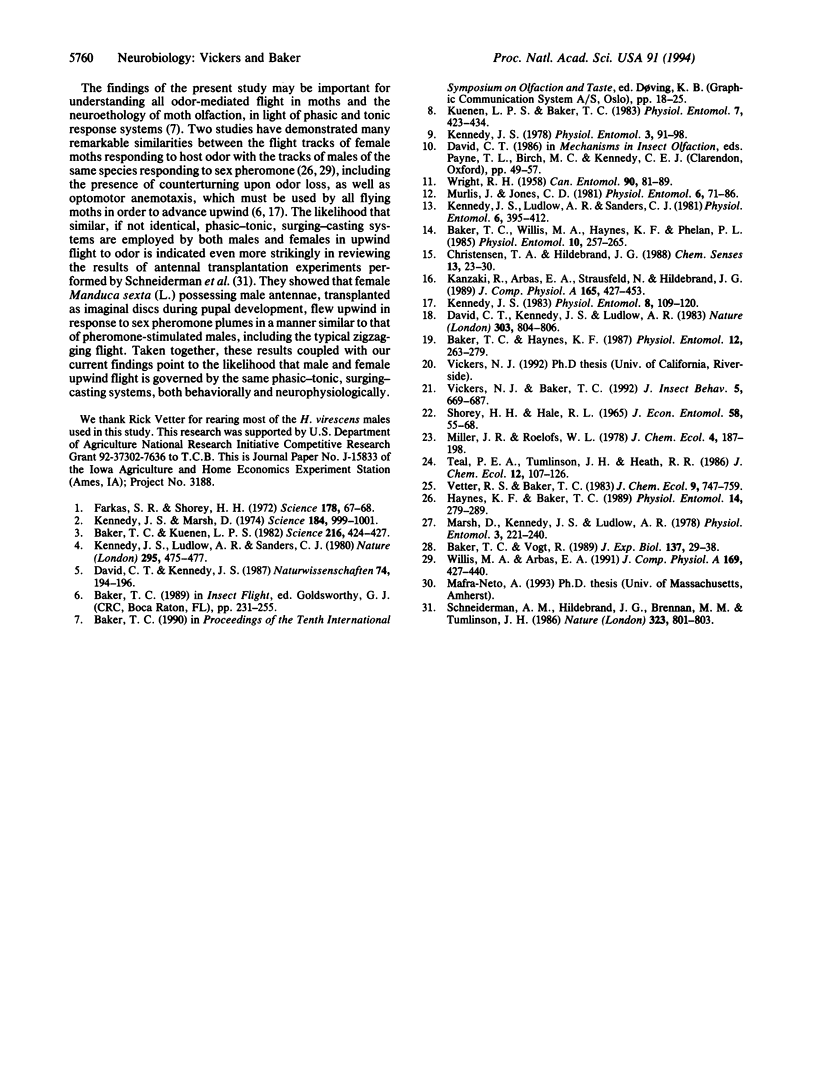Abstract
We characterized single upwind surges of flying male Heliothis virescens moths in response to individual strands of pheromone generated experimentally in a wind tunnel. We then showed how this surge functions in this species as a basic 13.4-cm, 0.38-sec-long building block that is strung together repeatedly during typical male upwind flight in a normal pheromone plume. The template for a single iteration, complete with crosswind casting both before and after the straighter upwind surging portion, was exhibited by males flying upwind to pheromone and experiencing filament contacts just frequently enough to produce successful upwind flight to the source, as hypothesized by an earlier model. Also as predicted, with more frequent filament contact by males, only the straightest upwind portions of the surges were reiterated, producing direct upwind flight with little crosswind casting. Electroantennogram recordings made from males in free flight upwind in a normal point source pheromone plume further support the idea that a high frequency of filaments encountered under the usual pheromone plume conditions promotes only these repeated straight surges. In-flight electroantennogram recordings also showed that when filament contacts cease, the casting, counterturning program begins to be expressed after a latency period of 0.30 sec. Together these results provide a plausible explanation for how male and female moths, and maybe other insects, fly successfully upwind in an odor plume and locate the source of odor, using a surging-casting, phasic-tonic response to the onset and disappearance of each odor strand.
Full text
PDF




Images in this article
Selected References
These references are in PubMed. This may not be the complete list of references from this article.
- Baker T. C., Kuenen L. P. Pheromone source location by flying moths: a supplementary non-anemotactic mechanism. Science. 1982 Apr 23;216(4544):424–427. doi: 10.1126/science.216.4544.424. [DOI] [PubMed] [Google Scholar]
- Baker T. C., Vogt R. G. Measured behavioural latency in response to sex-pheromone loss in the large silk moth Antheraea polyphemus. J Exp Biol. 1988 Jul;137:29–38. doi: 10.1242/jeb.137.1.29. [DOI] [PubMed] [Google Scholar]
- Farkas S. R., Shorey H. H. Chemical trail-following by flying insects: a mechanism for orientation to a distant odor source. Science. 1972 Oct 6;178(4056):67–68. doi: 10.1126/science.178.4056.67. [DOI] [PubMed] [Google Scholar]
- Kanzaki R., Arbas E. A., Strausfeld N. J., Hildebrand J. G. Physiology and morphology of projection neurons in the antennal lobe of the male moth Manduca sexta. J Comp Physiol A. 1989 Aug;165(4):427–453. doi: 10.1007/BF00611233. [DOI] [PubMed] [Google Scholar]
- Kennedy J. S., Marsh D. Pheromone-regulated anemotaxis in flying moths. Science. 1974 May 31;184(4140):999–1001. doi: 10.1126/science.184.4140.999. [DOI] [PubMed] [Google Scholar]
- Schneiderman A. M., Hildebrand J. G., Brennan M. M., Tumlinson J. H. Trans-sexually grafted antennae alter pheromone-directed behaviour in a moth. 1986 Oct 30-Nov 5Nature. 323(6091):801–803. doi: 10.1038/323801a0. [DOI] [PubMed] [Google Scholar]
- Willis M. A., Arbas E. A. Odor-modulated upwind flight of the sphinx moth, Manduca sexta L. J Comp Physiol A. 1991 Oct;169(4):427–440. doi: 10.1007/BF00197655. [DOI] [PubMed] [Google Scholar]



